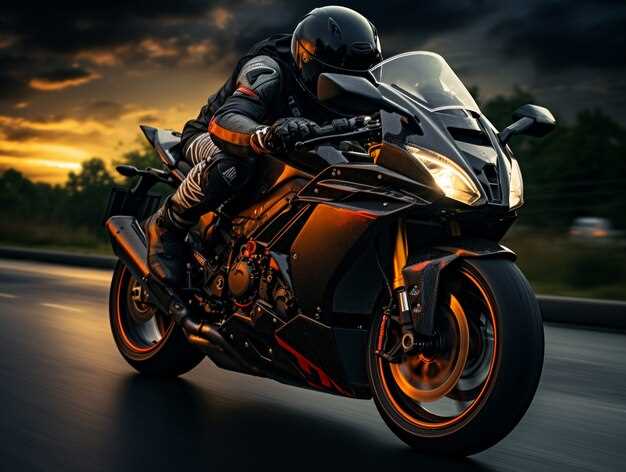
The world of sport motorcycles continues to evolve rapidly, and in 2024, two remarkable models are capturing the attention of enthusiasts: the 2024 Yamaha R7 and the Kawasaki Ninja 650. Both bikes offer unique characteristics, appealing to different segments of riders while maintaining a focus on performance, style, and rider experience. This review delves into the key differences and similarities between these two popular models, providing a comprehensive analysis for potential buyers.
The Yamaha R7 is designed with a race-inspired aesthetic, blending aggressive styling with lightweight agility. Powered by a 689cc inline-twin engine, it delivers a responsive and thrilling ride, perfect for those who seek excitement on both the track and the road. Features such as advanced suspension technology and a modern TFT display enhance the riding experience, making it ideal for riders who appreciate cutting-edge engineering.
On the other hand, the Kawasaki Ninja 650 presents a more versatile approach, combining sportiness with everyday practicality. Its 649cc parallel-twin engine offers a smooth and accessible power delivery, catering to a broader array of riders. The Ninja 650 is known for its comfortable ergonomics, making it a strong contender for both commuting and spirited weekend rides. This review will explore how these two bikes stack up against each other in terms of performance, comfort, technology, and overall value.
Performance Metrics: Acceleration and Top Speed Analysis
The 2024 Yamaha R7 and Kawasaki Ninja 650 are two prominent contenders in the mid-range sportbike segment, offering distinct performance characteristics that appeal to diverse riding preferences. When comparing their acceleration and top speed, several metrics come into play.
Starting with the Yamaha R7, it is powered by a 689cc parallel-twin engine, producing around 73 horsepower and 67 Nm of torque. This configuration allows the R7 to achieve impressive acceleration, reaching 0 to 60 mph in approximately 3.5 seconds. The lightweight chassis and sporty ergonomics further enhance handling and responsiveness, making it a favorite for riders seeking agility and sharp cornering capabilities.
In contrast, the Kawasaki Ninja 650 features a slightly larger 649cc parallel-twin engine, generating around 67 horsepower and 65 Nm of torque. Though it has slightly less power than the R7, the Ninja 650 excels in smooth power delivery and mid-range performance, allowing it to sprint from 0 to 60 mph in about 3.9 seconds. This makes it a suitable option for riders who prefer a more relaxed acceleration experience combined with everyday rideability.
When it comes to top speed, the Yamaha R7 can reach a maximum speed of approximately 130 mph, making it a more performance-oriented choice for those seeking speed and thrill on the track. The aerodynamic design aids in reducing drag, contributing to its high-speed capabilities.
The Kawasaki Ninja 650, while also competitive, achieves a top speed of around 125 mph. Its focus on practicality and comfort does not detract significantly from its performance, yet it marginally lags behind the R7 in raw speed. The Ninja’s setup appeals to riders who prioritize a balanced mix of performance and everyday usability.
In summary, the Yamaha R7 outpaces the Ninja 650 in terms of acceleration and top speed metrics, catering to enthusiasts who desire a sportier ride. However, the Ninja 650 offers its unique strengths in versatility and comfort, making both motorcycles excellent choices in their own right.
Rider Comfort and Ergonomics: A Detailed Assessment

The comfort and ergonomics of a motorcycle are critical factors that influence a rider’s overall experience, especially during long rides. In comparing the 2024 Yamaha R7 and the Kawasaki Ninja 650, distinct design philosophy and rider ergonomics become evident.
The Yamaha R7 features a sporty riding position characterized by a slightly aggressive stance. The higher foot pegs and lower handlebars create a race-oriented geometry that may cater to experienced riders seeking performance. However, this setup can lead to discomfort during extended rides for those not accustomed to such a position. The seat, while sleek and aesthetically pleasing, may lack the plushness required for prolonged usage.
In contrast, the Kawasaki Ninja 650 adopts a more relaxed ergonometric design. Its mid-position foot pegs and higher handlebars provide a comfortable, upright riding posture that alleviates strain on the wrists and back. This makes the Ninja 650 an appealing choice for both daily commuting and longer excursions. The seat is notably designed for enhanced comfort, featuring ample padding that supports the rider for hours on end without causing fatigue.
Rider accessibility also plays a role in the comfort assessment. The Yamaha R7’s narrower frame may feel snug for larger riders, while the Kawasaki Ninja 650 offers a more accommodating seating experience, appealing to a broader range of body types. Additionally, the Ninja 650’s low seat height makes it easier for shorter riders to reach the ground securely, enhancing confidence while stopped.
Both bikes come equipped with adjustable features, though the Yamaha R7 focuses more on sporty aspects, such as suspension tuning for performance. The Kawasaki Ninja 650, meanwhile, provides adjustments that directly impact rider comfort, catering to both performance and ease of use.
In summary, while the Yamaha R7 caters to those seeking a sporty experience, it may sacrifice comfort for performance. The Kawasaki Ninja 650 stands out with its balanced ergonomics and rider-friendly design, making it a more versatile choice for various riding conditions. Ultimately, the decision will depend on individual preferences, riding style, and intended use.
Price and Value: Cost Comparison and Features Overview

When considering the 2024 Yamaha R7 and the Kawasaki Ninja 650, the price and value proposition are crucial factors that influence potential buyers. The Yamaha R7 is positioned at a price point around $8,999, whereas the Kawasaki Ninja 650 typically retails for approximately $7,999. This disparity of $1,000 can impact buyer decisions, especially for those on a budget.
In terms of features, the Yamaha R7 boasts a more aggressive design and is geared towards sporty performance. With a lightweight chassis and an advanced suspension system, it provides a thrilling ride experience which appeals to track enthusiasts. The R7 is equipped with a 689cc inline-twin engine, generating around 73 horsepower. Its performance-oriented features, including a quick-shifter and modern TFT display, contribute to its higher price tag.
Conversely, the Kawasaki Ninja 650 offers a balanced blend of performance and comfort, making it an excellent choice for both beginner and intermediate riders. Powered by a 649cc parallel-twin engine, it delivers around 67 horsepower. This model is designed for versatility, featuring a more upright riding position, which enhances everyday usability. The Ninja 650 also includes standard features such as ABS and a color LCD display, adding significant value at a lower price point.
Ultimately, the choice between the Yamaha R7 and Kawasaki Ninja 650 will depend on the rider’s priorities. If the focus is on high-performance and track capabilities, the R7 justifies its higher cost through advanced technology and sporty dynamics. On the other hand, if outright performance is secondary to comfort and everyday usability, the Ninja 650 represents exceptional value for its price, making it a compelling option for many riders.